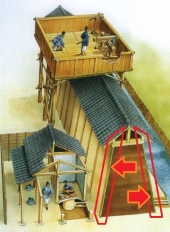








Baldwin Organic Garden Share Our home-based garden cooperative. Tribal Wind Arts Rustic Furniture & Artisan-Craftwork from reclaimed suburban trees




The ultimate goal of farming is not the growing of crops, but the cultivation and perfection of human beings. - Masanobu Fukuoka
















inlikeflint wrote:
Rototill and amend the soil.
and amend
and amend
and amend...
In clay soil, the rototiller and high preassure sprayer is your friend.
Sometimes the answer is not to cross an old bridge, nor to burn it, but to build a better bridge.


























Need more info?
www.earthenhand.com
Earthen Hand Natural Building
"If everyone makes a difference, the world will be different."

|
No more fooling around. Read this tiny ad:
The new permaculture playing cards kickstarter is now live!
https://www.kickstarter.com/projects/paulwheaton/garden-cards
|






